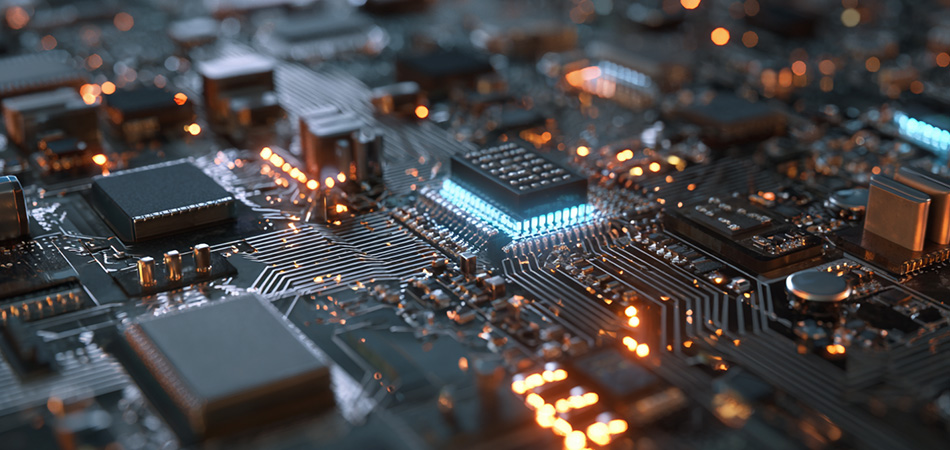-
- PCB TYPE
- PRINTED CIRCUIT BOARD PROTOTYPE ALUMINUM PRINTED CIRCUIT BOARD R&F PCB FPC HIGH FREQUENCY PCB HIGH-TG PCB HEAVY COPPER PCB HDI PCB PCB FOR LIGHTING METAL CORE PCB
time:Jun 14. 2025, 15:57:14
In the rapidly transforming automotive landscape, the integration of advanced electronics has become a cornerstone of vehicle innovation. Printed circuit boards (PCBs), often overlooked yet indispensable, are the linchpins powering modern automotive electronics. From engine control units (ECUs) to cutting - edge advanced driver - assistance systems (ADAS), automotive PCBs enable seamless communication and operation of complex components. As the industry steers towards electrification, autonomy, and connectivity, these specialized PCBs are not only keeping pace but also driving the evolution of vehicle electronics. This article delves into automotive PCBs, exploring their characteristics, design principles, manufacturing processes, applications, market trends, challenges, and future outlooks.
Understanding Automotive PCBs
Definition and Core Characteristics
Automotive PCBs are tailored to endure the harsh automotive environment. They must withstand extreme temperatures, ranging from sub - zero cold to sweltering heat, especially in areas like the engine compartment. For instance, components near the engine may face temperatures exceeding 150°C, while those in external sensors could endure - 40°C in frigid climates. Additionally, they are constantly exposed to vibrations from the engine and road irregularities, as well as electrical noise from various vehicle systems.
Reliability is non - negotiable. Subject to rigorous quality control, automotive PCBs undergo extensive testing for electrical performance, mechanical strength, and environmental resistance. They often feature advanced technologies such as high - density interconnects (HDIs), blind and buried vias, and multi - layer designs to accommodate the growing complexity of automotive electronics, ensuring long - term, failure - free operation throughout a vehicle's lifespan, which can span over 15 years.
Material Selection
Material choice is pivotal in automotive PCB design. For substrates, fiberglass - reinforced epoxy laminates like FR - 4 are commonly used in less demanding areas due to their balance of electrical insulation, mechanical strength, and cost - effectiveness. In high - temperature zones, materials like polyphenylene sulfide (PPS) and liquid crystal polymer (LCP) are preferred. PPS offers exceptional thermal stability and chemical resistance, while LCP provides superior high - frequency performance and low moisture absorption, making them ideal for engine - related applications.
Copper, prized for its excellent electrical conductivity, serves as the primary material for conductive traces. However, automotive applications demand specialized copper foils with enhanced adhesion and corrosion resistance to withstand the vehicle's environment. Dielectric materials, separating conductive layers, are selected for their high dielectric strength, low dielectric loss, and good thermal properties to ensure efficient signal transmission and heat dissipation.

Design Considerations for Automotive PCBs
Electrical Design
Electrical design is central to automotive PCB functionality. Power delivery requires precise trace routing to minimize voltage drops, ensuring components receive stable power. For example, in electric vehicle (EV) battery management systems, accurate power delivery is crucial for battery performance and safety. Designers implement power management techniques like voltage regulation and sequencing to protect components from electrical surges.
Signal transmission, especially in high - speed applications such as ADAS and in - vehicle communication, demands meticulous attention. Impedance - controlled traces, proper grounding, and shielding are employed to maintain signal integrity, reducing crosstalk and electromagnetic interference (EMI). In autonomous driving systems, where split - second decision - making is based on sensor data, reliable signal transmission is essential.
Thermal Design
Thermal management is a critical challenge in automotive PCB design. Heat - generating components, like power transistors in ECUs, can cause overheating if not properly managed. Heat sinks, made of materials with high thermal conductivity such as aluminum or copper, are attached to the PCB to increase heat dissipation surface area. Thermal vias, strategically placed holes filled with conductive materials, transfer heat from surface - mounted components to the inner PCB layers for better dissipation. Optimizing component layout also promotes natural or forced air circulation, reducing hotspots and maintaining optimal operating temperatures.
Mechanical Design
Mechanical design ensures automotive PCBs can withstand the rigors of vehicle operation. Stiffeners, supports, and mounting brackets are incorporated to enhance rigidity and secure the PCB, preventing movement and damage from vibrations and shocks. For example, in off - road vehicles, PCBs need to endure extreme jolts. Considering the thermal expansion and contraction of materials is vital, as differences in expansion rates can cause mechanical stress, potentially leading to cracks or component detachment. Flexible circuit designs and compliant connectors may be used to mitigate these issues.
Manufacturing Processes for Automotive PCBs
Lamination
Lamination, the initial manufacturing step, bonds multiple PCB layers together. The substrate, copper foils, and prepregs (resin - impregnated fiberglass sheets) are stacked precisely and subjected to heat and pressure to cure the resin, forming a solid board. Tight control of lamination parameters, including temperature, pressure, and time, is essential to prevent voids, delaminations, or uneven bonding, which could compromise electrical and mechanical performance.
Drilling
Drilling creates holes for vias, component mounting, and electrical connections. High - speed drilling machines with precise tooling ensure accurate hole size and location. Laser drilling has gained popularity for high - density applications, offering higher precision, smaller hole sizes, and faster processing compared to traditional mechanical drilling, enabling more complex PCB designs.
Plating
After drilling, the PCB is plated with copper to create electrical connections between layers and a soldering surface. Electroless copper plating deposits a thin layer on non - conductive surfaces, providing a base for electroplating, which builds up the copper layer to the desired thickness, ensuring good conductivity and mechanical strength.
Circuit Patterning and Etching
Photolithography is used for circuit patterning. A photosensitive resist is applied to the copper surface, exposed to ultraviolet light through a patterned mask, and developed to remove unwanted copper. The etching process then selectively dissolves the unprotected copper, forming precise electrical circuits. Accuracy in this process is critical to avoid electrical problems and component failures.
Surface Finishing
Surface finishing protects copper surfaces from oxidation, improves solderability, and enhances the PCB's appearance. Options like electroless nickel immersion gold (ENIG), organic solderability preservative (OSP), and hot air solder leveling (HASL) are used. ENIG offers excellent corrosion resistance and solderability for high - end applications, OSP is cost - effective with a thin protective film, and HASL provides good solderability but may have flatness limitations.
Applications of Automotive PCBs
Engine Control Units (ECUs)
ECUs, the brains of vehicle engines, rely on automotive PCBs to monitor and control functions such as fuel injection, ignition timing, and emissions. PCBs in ECUs must endure the harsh engine compartment environment while processing vast amounts of sensor data in real - time. High - speed processing capabilities and robust design are essential for optimizing engine performance and reducing emissions.
Transmission Control Units (TCUs)
TCUs, responsible for seamless gear shifting in automatic transmissions, use PCBs to interpret sensor inputs and control transmission actuators. These PCBs need high reliability and fast response times to ensure smooth gear changes, enhancing driving comfort and fuel efficiency while withstanding transmission - related vibrations and shocks.
Advanced Driver - Assistance Systems (ADAS)
ADAS, including features like adaptive cruise control and automatic emergency braking, depend on PCBs to manage sensor data, process information, and communicate with other vehicle systems. PCBs in ADAS must handle high - speed data processing, have excellent signal integrity, and be highly reliable to ensure safety - critical functions operate flawlessly
In - Vehicle Infotainment Systems
In - vehicle infotainment systems, offering touchscreen displays, audio, navigation, and connectivity, rely on PCBs to power and control components. These PCBs need to handle high - resolution graphics, audio processing, and support various connectivity options while maintaining electromagnetic compatibility to prevent interference with other vehicle electronics.
Electric Vehicle (EV) Power Electronics
EV power electronics, such as inverters and battery management systems, require PCBs capable of handling high - voltage and high - current loads. These PCBs must have excellent thermal management to prevent overheating, ensuring the safe and efficient operation of EVs, which are becoming increasingly popular in the automotive market.
Market Dynamics of Automotive PCBs
Market Size and Growth
The global automotive PCB market has been expanding steadily, driven by the increasing complexity of automotive electronics and the surging demand for EVs. Market research projects significant growth in the coming years, as vehicles become more intelligent and connected, fueling the need for high - performance PCBs with advanced features.
Market Segmentation
Segmented by product type, the market includes single - layer, double - layer, multi - layer, and high - density interconnect (HDI) PCBs, with multi - layer and HDI PCBs growing fastest due to their ability to handle complex electronics. Application - based segmentation covers ECUs, TCUs, ADAS, infotainment, EV power electronics, etc., with ADAS and EV power electronics segments expected to see substantial growth. Regionally, Asia Pacific dominates the market, thanks to major automotive manufacturers and the rising EV demand in the area.
Competitive Landscape
The automotive PCB market is highly competitive, with leading PCB manufacturers and automotive electronics suppliers vying for market share. Competition is fueled by product quality, cost - effectiveness, technological innovation, and customer service. Companies invest heavily in research and development to introduce advanced PCB technologies and improve product reliability.
Challenges and Future Trends of Automotive PCBs
Challenges
The industry faces several hurdles. The growing complexity of automotive electronics demands PCBs with higher performance and advanced features, increasing development costs. Improved thermal management remains a challenge, requiring advanced materials and manufacturing processes to handle heat - intensive components. Additionally, cost - reduction pressures while maintaining performance are significant, as the automotive industry seeks more efficient solutions.
Future Trends
The future of automotive PCBs is promising. The rise of electric and autonomous vehicles will drive demand for PCBs with enhanced data processing, communication, sensing, thermal management, and reliability. Integration of artificial intelligence (AI) and machine learning (ML) in automotive electronics will necessitate PCBs with high - performance computing capabilities. The shift towards a connected and intelligent automotive ecosystem, with the Internet of Things (IoT) and 5G technologies, will require PCBs with advanced communication and connectivity features.
Conclusion
Automotive PCBs are integral to modern vehicle functionality and performance. As the automotive industry evolves towards a more connected, intelligent, and sustainable future, the demand for high - performance PCBs will continue to soar. PCB manufacturers and automotive electronics suppliers must collaborate, invest in R&D, and innovate to meet these demands, ensuring they remain at the forefront of driving the evolution of vehicle electronics and shaping the future of mobility.
如果你对文章的精简程度、内容深度,或是案例补充的方向有不同想法,欢迎随时告诉我,我可以进一步优化。

Got project ready to assembly? Contact us: info@apollopcb.com



We're not around but we still want to hear from you! Leave us a note:

Leave Message to APOLLOPCB
